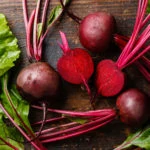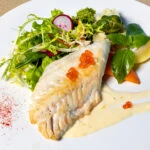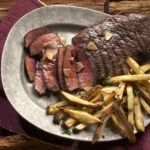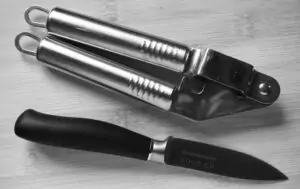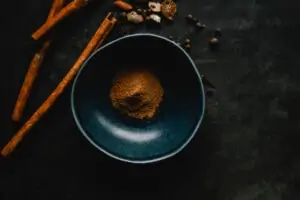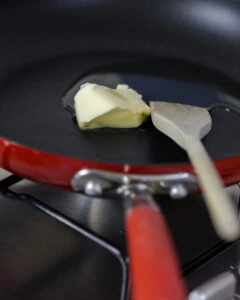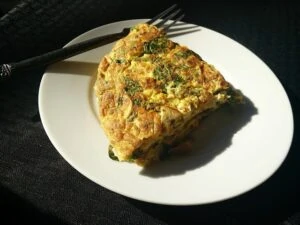The original herbs de Provence is a selection of herbs that makes up the staple in Provencal cooking. Popular chefs have commercialized the mix of herbs that home cooks in France use, to remind emigrants of their homeland’s seasonal abundance.
This spice mix in a jar is good to use if you’re looking for a French summer flair, but you can also go traditional and make up your own herbes de Provence recipes, including your own home-dried herbs.
What Are Herbs de Provence
Herbées De Provence is an aromatic mixture of seasonal herbs grown in Provence, France, and is used by chefs in traditional French cooking. The herb mix called herbs de Provence was made an important part of commercial French and Mediterranean cooking by Julia Child in the 60s.
The commercial mix contains thyme, basil, rosemary, tarragon, summer savory, marjoram, oregano, and bay leaf. The mix of dried herbs gives a characteristic taste to recipes such as grilled meat or cooked vegetables.
The History of Herbes de Provence as a French Herb Blend
Herbes de Provence originates in southeast France, where the herb season can reach its full potential. The ingredient started out as a combination of herbs that grew in the Provence region in the summer.
The combination of herbs in this mix seeks to represent the herbs used as staples in daily food preparation in France. The blend was made commercially popular outside of France in the 1960s when Julia Child began to teach the world’s home chefs about French cuisine.
Julia Child’s recipe for Poulet Sautée a Herbes de Provence in her cookbook Mastering French Cooking is known as the Provençal herb blend’s first debut, and the cookbook was bought by chefs around the world.
Herbs de Provence Recipe
A homegrown French spice mix makes for an excellent spice rack herb blend staple that anyone can use to give their dish a Provençal flair.
Easy to make with your own herbs and a great replacement for expensive spice supplies, your own combination of the following spices gives your healthy recipes your own twist and French flair.
Rosemary
Rosemary is a bitter herb with notes of wood, pine, sage, lavender, mint, and lemon. The aftertaste is mostly bitter and acidic.
Rosemary goes with sweet and savory dishes, especially combined with sage, thyme, and oregano.
Lavender
Add this flowery herb to sweet dishes that rely on eggs or cream or cheese. Be sure to use lavender early in the cooking process, not after, to avoid its most bitter flavors.
Oregano
Oregano tastes a little bit bitter and has pungent earthy notes of hay and mint. It smells of camphor.
Oregano tastes good in savory dishes and pairs well with vegetables, meat, or fish.
Thyme
Thyme tastes earthy and a wee bit bitter, a little lemony, and a little minty.
Thyme’s bright, lite flavors pair well with tomato, egg, meat, beans, potato, and oregano.
Basil
Basil is strong. It smells sweet, peppery, and minty.
Basil is delicious in dishes that include summer garden vegetables, and fish.
Marjoram
Marjoram is a mild herb in the mint family.
The herb tastes delicious with vegetables, poultry, and fish, and pairs well with foods containing saturated fat.
Tarragon
Tarragon has a strong, bittersweet flavor with notes of anise, eucalyptus, and vanilla.
The herb pairs well with eggs, chicken, and fish, and is used in the French Béarnaise sauce.
Fennel Seeds
Fennel tastes sweet and turns bitter when roasted or sautéed.
Fennel goes well in dishes with salmon, apples, or ham.
Bay Leaf
Bay leaves have notes of oregano and thyme. Bay leaf has a fresh, vibrant, sharp flavor.
Add a bay leaf or two to deep-flavored dishes with meats and vegetables, or to savory sauces and soups.
Chervil
Chervil tastes a little like parsley and a bit like tarragon.
Chervil goes well in egg dishes and salads.
Substituting Herbs de Provence
If you don’t have an herbs de Provence blend, make your own herbs de Provence recipe by using your personal preference of herbs in the quantity that sounds good to you. Rosemary, oregano, and thyme are a common pairing!
How to Use Herbs de Provence
This herb mixture is used to add flavor to foods that are cooked for a long time, like in broths, stews, soups, and roasted vegetables, and to season meats, fry and roast chicken and other poultry, with grilled fish, and in recipes for fresh meats, cheeses, local produce, and in lentil stews and egg dishes.
Certain herbs are sometimes called for in easy recipes in French cookbooks, but other recipes that are passed from family to family use many herbs according to personal taste.
The home cook should read through all the ingredients before adding spices to their mixing bowl and alter the recipe as needed and according to local seasonal availability.
With Olive Oil
Herbs de Provence and olive oil tandem well as most of the herbs in the French blend are also common in Italian cuisine — a cuisine that relies heavily on olive oil.
Combine the herbs with olive oil and coat a roast pre-cooking, or add the two to coups and stews for deeper flavors.
Early in the Cooking Process
Use dried herbs de Provence early in cooking to allow the herbs to release their full flavor potential via the heat.
Experimentally
The French herb blend originated as a natural blend, meaning it changed by the year’s crop and the chef’s preference. Make your own blend or adapt your blend to your preferences for your dish.
Storing Herbs de Provence
Dry herb blends like herbs de Provence can be stored for one to three years in an airtight container in a pantry.
Store the dried provincial herbs in an airtight container like an air tight jar or spice grinder. Dark glass helps avoid light damage to the herbs.
How long do Herbs de Provence last?
Dried herbs lose their taste with time and give the most flavor to dishes when used within six months to one year. For the highest quality, store just enough dried herbs to use within one year and renew your stock yearly.
What Is in McCormick Herbs de Provence
McCormick brand herbs de Provence blend contains a balance of rosemary, marjoram, sage, thyme, salt, anise seed, and lavender.
Herbs de Provence Blend vs Italian Seasoning
The herbs de Provence blend is a mixture of herbs commonly found in the Provence region of France that changes based on the region’s summertime availability and the local chefs’ taste preferences for the particular dish. Italian seasonings are specific, American-influenced herb mixtures.
Herbs de Provence vs Fines Herbs
Fines herbs is a French Haute twist on herbs de Provence that uses chives, parsley, chervil, and tarragon.
Fines herbs are used as a seasoning in delicate dishes that don’t have long cooking times, like eggs, fish, and a few chicken recipes.
What Herbs de Provence Tastes Like
The herb blend from France as added to the culinary lexicon around the world by Julia Child tastes strongly herby and a little bit floral.
Does Herbs de Provence Have Lavender?
Herbs de Provence don’t often include lavender, but lavender is included in most spice blends in American-French grocery stores and in Mediterranean cuisine.
Lavender makes its appearance in the French tradition in recipes like those for creme brulee, though the flower isn’t used as commonly in French cooking as other Provençal herbs like oregano, thyme, and basil are.
Where to buy Herbs de Provence
Herbs de Provence can be found in most grocery store spice aisles as well as online. We recommend sticking to organic if you can to avoid any pesticide contaminants.
More Information on Herbs de Provence
This unique blend seeks to encapsulate the ever-changing chef’s summer herb seen in Provence, France. The Provençal flavor of just one summer certainly can’t be captured in just one jar, but herbs de Provence gets us pretty close.
Here is some more interesting information on the history of Provençal cooking as the origin of spice blends like herbes de Provence:
- KitchenSavvy’s conversation thread on the question of lavender or no lavender in the spice blend.
- A yummy creme brulee recipe with lavender

